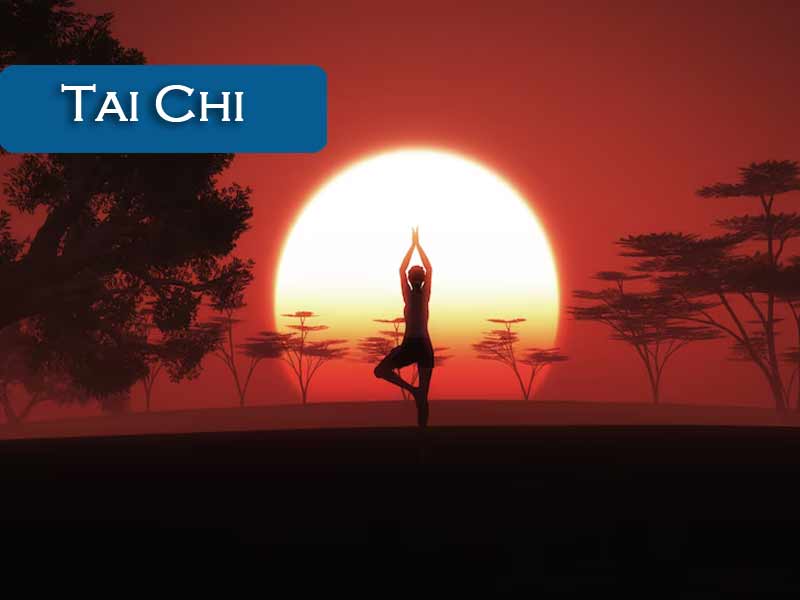Tai Chi, also known as Tai Chi Chuan, is an ancient Chinese martial art that is renowned for its many health benefits. It is a low-impact exercise that involves slow, gentle movements that are easy on the joints and can be performed by people of all ages and fitness levels. Tai Chi is also a great workout for the morning, as it can help to energize the body and mind, and set a positive tone for the rest of the day.
Origins of Tai Chi
This exercise has its roots in the ancient Chinese philosophy of Taoism, which emphasizes the balance of yin and yang, the complementary forces that make up the universe. This exercise was developed as a form of martial art in the 12th century, and over time it has evolved into a more meditative and health-focused practice.
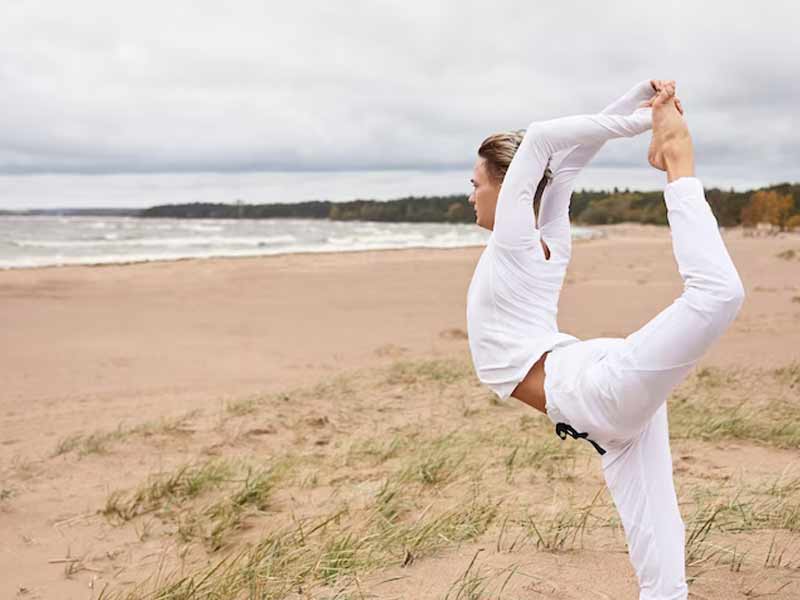
The slow, graceful movements of Tai Chi are designed to promote the flow of vital energy, or Qi, through the body. According to traditional Chinese medicine, when Qi is flowing freely, we experience good health and vitality. When Qi is blocked, we may experience pain, illness, or fatigue. This exercise is therefore seen as a way to unblock Qi and promote overall well-being.
Benefits of Tai Chi
There are many health benefits associated with practicing Tai Chi, including:
- Reduced stress and anxiety – This exercise is known for its calming and meditative qualities. Practicing Tai Chi can help to reduce stress and anxiety levels, and promote a sense of relaxation and inner peace.
- Improved balance and coordination – This exercise involves slow, deliberate movements that require a great deal of focus and concentration. Over time, practicing Tai Chi can help to improve balance and coordination, which can be especially beneficial for older adults.
- Increased flexibility and range of motion – Tai Chi movements involve gentle stretching and twisting, which can help to increase flexibility and range of motion in the joints.
- Lowered blood pressure – Studies have shown that regular practice of Tai Chi can help to lower blood pressure in people with hypertension.
- Improved immune function – This exercise has been shown to boost the immune system, which can help to protect against illness and disease.
- Reduced risk of falls – This exercise can help to improve balance and coordination, which can reduce the risk of falls, especially in older adults.
- Reduced pain and inflammation – This exercise has been shown to reduce pain and inflammation in people with chronic conditions such as arthritis.
- Improved overall fitness – While Tai Chi is a low-impact exercise, it can still provide a good workout for the body. Over time, practicing Tai Chi can help to improve cardiovascular health, build strength and endurance, and increase overall fitness levels.
How to Practice Tai Chi
This exercise is best learned from a qualified instructor, who can guide you through the movements and help you to understand the underlying principles of the practice. However, there are also many resources available online that can help you to get started with Tai Chi on your own.
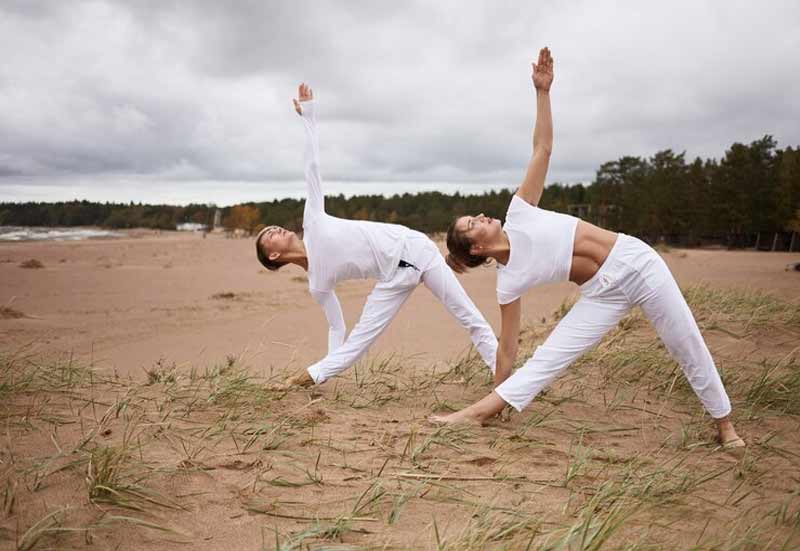
When practicing Tai Chi, it is important to wear comfortable, loose-fitting clothing that allows for a full range of motion. You should also practice in a quiet, peaceful environment, free from distractions.
The basic movements of Tai Chi involve shifting weight from one foot to the other, while moving the arms and hands in a series of flowing, circular motions. It is important to move slowly and deliberately, with a focus on maintaining good posture and alignment throughout the movements.
This exercise is often practiced in sets or sequences of movements, known as forms. There are many different forms of Tai Chi, each with its own unique set of movements and principles.
One of the most commonly practiced forms of Tai Chi is the Yang style, which is characterized by its slow, flowing movements and emphasis on relaxation and balance. Other popular forms of Tai Chi include the Chen style, which incorporates fast and slow movements and explosive power, and the Wu style, which emphasizes softness and flexibility.
In addition to the movements themselves, Tai Chi also incorporates breathing techniques and meditation. The breathing techniques help to promote relaxation and focus, while the meditation aspect helps to cultivate a sense of inner calm and stillness.
While Tai Chi is generally considered to be a low-impact exercise, it is still important to listen to your body and work within your own limits. If you have any health concerns or injuries, be sure to talk to your doctor or a qualified Tai Chi instructor before beginning a practice.
Getting Started with Tai Chi
If you are interested in trying Tai Chi for yourself, there are many resources available to help you get started. Here are some tips to help you begin your Tai Chi journey:
- Find a qualified instructor: Look for a certified Tai Chi instructor in your area who can guide you through the movements and help you to understand the principles of the practice.
- Start with the basics: Begin with the basic movements and forms of Tai Chi, and practice them regularly to build a solid foundation.
- Practice regularly: The benefits of Tai Chi come with regular practice. Try to practice for at least 20-30 minutes a day, or several times a week.
- Listen to your body: Pay attention to how your body feels during and after your practice. If you feel any pain or discomfort, stop and adjust your movements as needed.
- Stay present and focused: Tai Chi is a meditative practice, so it’s important to stay present and focused on the movements and your breath.
- Have fun! Tai Chi is a beautiful and enjoyable practice that can bring many benefits to your body, mind, and spirit. Don’t be afraid to experiment and explore the practice in your own way.
The difference between Tai Chi and yoga
Tai Chi and yoga are two ancient practices that have been used for centuries to promote health and well-being. While they share many similarities, there are also significant differences between the two practices. In this article, we will explore the similarities and differences between Tai Chi and yoga in detail.
Origins and History
Tai Chi and yoga both have ancient roots, but they come from different cultural traditions. Tai Chi originated in China, and is believed to have been developed by a Taoist monk named Zhang Sanfeng in the 12th century. According to legend, Zhang Sanfeng was inspired to create the practice after observing a crane and a snake engaged in a battle.
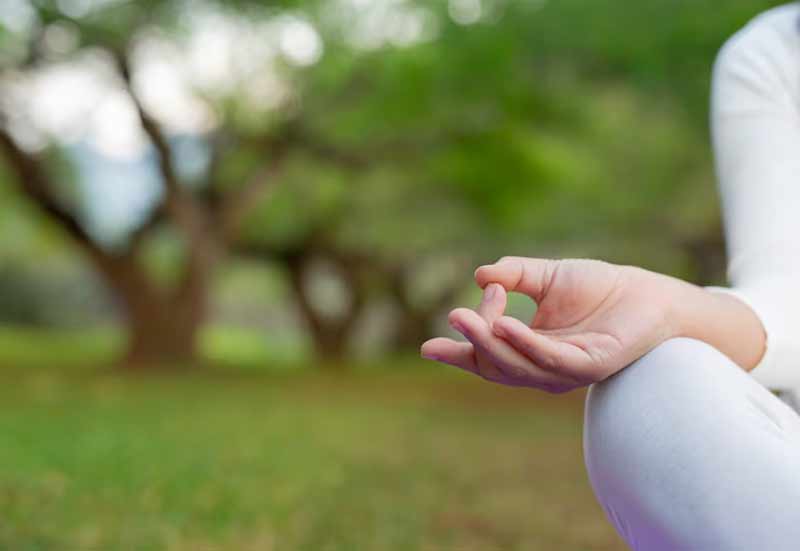
Yoga, on the other hand, originated in ancient India, and its history dates back to at least 5,000 years ago. The word “yoga” comes from the Sanskrit word “yuj,” which means to unite or to join. The practice of yoga has been developed and refined over many centuries, with different styles and traditions emerging over time.
Purpose and Benefits
Both Tai Chi and yoga are practiced for their health benefits, but the specific benefits of each practice differ. Tai Chi is often described as a moving meditation, and its purpose is to cultivate a sense of inner peace, relaxation, and mindfulness. Tai Chi has been shown to improve balance, flexibility, and muscle strength, and may also help to reduce stress, anxiety, and depression.

Yoga, on the other hand, has a broader range of health benefits, and can be practiced for physical, mental, and spiritual well-being. The physical benefits of yoga include improved flexibility, strength, and balance, as well as a reduction in pain and stiffness. The mental benefits of yoga include stress relief, improved mood, and a greater sense of focus and clarity. The spiritual benefits of yoga are related to its roots in Indian philosophy, and include a deeper understanding of the self, a sense of connection to the divine, and a greater sense of purpose and meaning in life.
Practice and Techniques
Tai Chi and yoga both involve specific postures and movements, but the techniques and principles of each practice differ. Tai Chi involves a series of slow, flowing movements, which are designed to promote relaxation and mindfulness. Tai Chi movements are often circular and gentle, with a focus on internal energy and balance. Tai Chi also incorporates breathing techniques, which are used to promote relaxation and calm.

Yoga, on the other hand, involves a wide range of postures and movements, which are designed to improve flexibility, strength, and balance. Yoga postures, or asanas, can be dynamic or static, and are often held for several breaths. Yoga also incorporates breathing techniques, such as pranayama, which are used to control the breath and promote relaxation.
Styles and Traditions
Both Tai Chi and yoga have multiple styles and traditions, each with their own unique characteristics and approaches. In Tai Chi, the most commonly practiced styles include the Yang style, the Chen style, and the Wu style. Each style has its own unique movements, techniques, and principles, and may be practiced for different purposes. The Yang style, for example, is the most popular style of Tai Chi, and is often practiced for its health benefits.
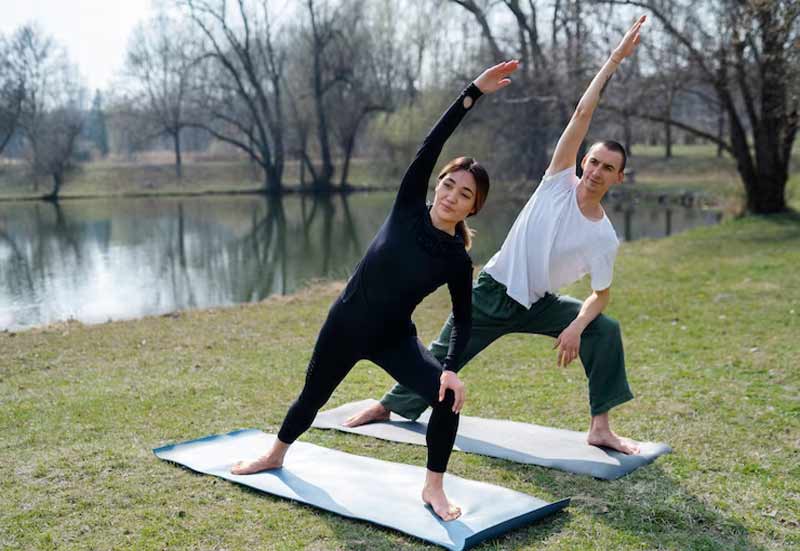
In yoga, the most commonly practiced styles include Hatha yoga, Vinyasa yoga, Iyengar yoga, and Ashtanga yoga, among others. Each style has its own unique approach to the practice, and may focus on different aspects of yoga, such as physical postures, breathing techniques, or meditation.
Equipment and Environment
Tai Chi and yoga can be practiced in a variety of settings, and require different levels of equipment and support. Tai Chi can be practiced indoors or outdoors, and requires only loose, comfortable clothing and flat, supportive shoes. Tai Chi can be practiced alone or in a group, and does not require any equipment or props.
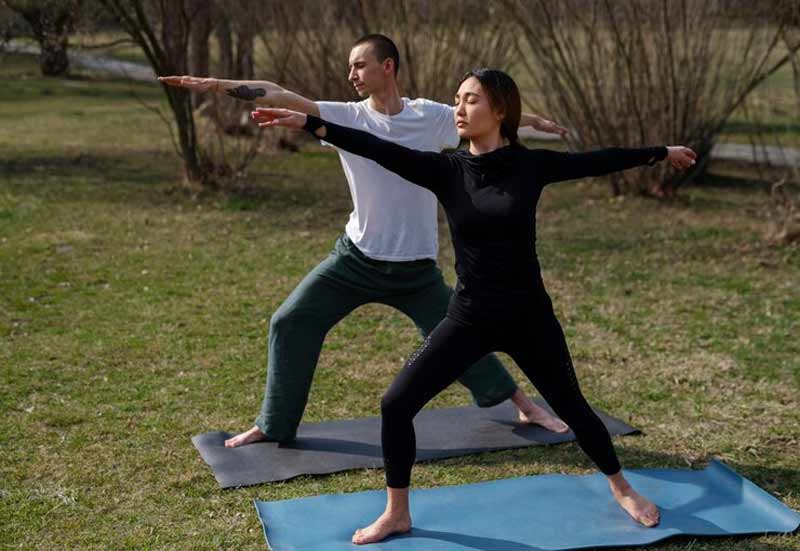
Yoga, on the other hand, may require some equipment, such as a yoga mat, blocks, straps, or blankets, to support the body in certain postures. Yoga can be practiced indoors or outdoors, and may be practiced alone or in a group. The environment in which yoga is practiced can be important, as the practice often emphasizes creating a calm and peaceful space for the body and mind.
Philosophy and Spirituality
While both Tai Chi and yoga can have spiritual dimensions, the philosophical roots and beliefs of each practice differ. This exercise is rooted in Taoist philosophy, which emphasizes living in harmony with nature, cultivating inner peace and balance, and connecting with the natural world. Tai Chi emphasizes the importance of “qi” or “chi,” which is the vital energy that flows through the body and can be manipulated through breath and movement.

Yoga is rooted in Indian philosophy, which emphasizes the connection between body, mind, and spirit, and the idea that the individual self is connected to the universal consciousness. Yoga is often associated with the Hindu tradition, and includes concepts such as karma, dharma, and the chakra system. While the spiritual dimension of yoga may be more pronounced in certain styles or traditions, such as Kundalini yoga or Bhakti yoga, it is also possible to practice yoga purely as a physical exercise, without any spiritual or philosophical beliefs.
This exercise and yoga are both ancient practices that can offer a wide range of health benefits. While they share many similarities, including a focus on mindful movement, breath control, and relaxation, they also have significant differences in terms of their history, purpose, techniques, styles, equipment, and philosophy. Ultimately, the choice between Tai Chi and yoga may depend on individual preferences and goals, as well as the availability of resources and support for each practice. Regardless of which practice one chooses, both Tai Chi and yoga can offer a path to greater health, well-being, and inner peace.
Conclusion
This exercise is a beautiful and powerful practice that has been used for centuries to promote health and well-being. Its gentle, flowing movements are ideal for a morning workout, helping to energize the body and mind and set a positive tone for the day ahead. Whether you are a beginner or an experienced practitioner, This exercise has something to offer everyone. So why not give it a try and see how it can benefit your body, mind, and spirit?
The last word is with you, the audience
Be sure to read other educational articles. For scientific issues, be sure to contact a specialist doctor. These materials are only for study and non-educational purposes. Of course, expert doctors can guide you a lot.
Our cooking training center has collected unique materials for you dear ones. This content is very useful and will help you cook the best and most delicious food for yourself and your loved ones at home.
The recipe section is for introducing the best dishes of the nations. Dear ones, you can see the best dishes in this section and cook whatever you want at home. Don’t forget to read the recipe and ingredients before doing anything to determine your cooking needs.
Soon we will be with you with a more professional team with more facilities. We suggest that if you are overweight, fill out the and wait for our experts to contact you and send you the right meal plan.
The slogan we put on our site is to fight obesity. In this regard, we will provide you with many suitable recipes. Be sure to follow our site to learn about many healthy foods. Do not forget that a healthy life requires extensive changes. One of these changes is changing food. So eat healthy
Please follow us on linkedin. You can learn all best french food recipe and best Italian food recipe and best arabic food recipes and best Iranian food recipes you can check our Reddit page.
